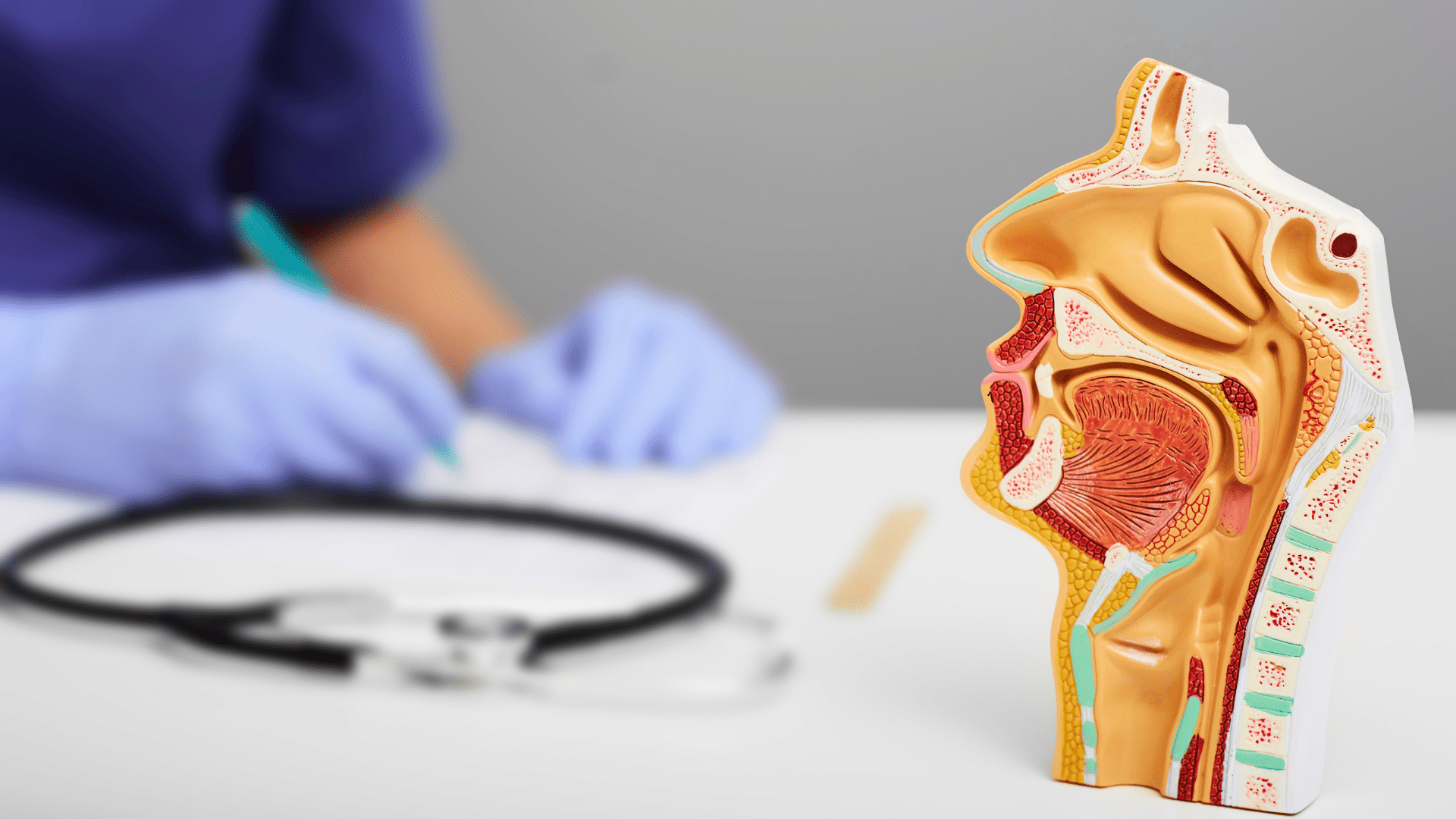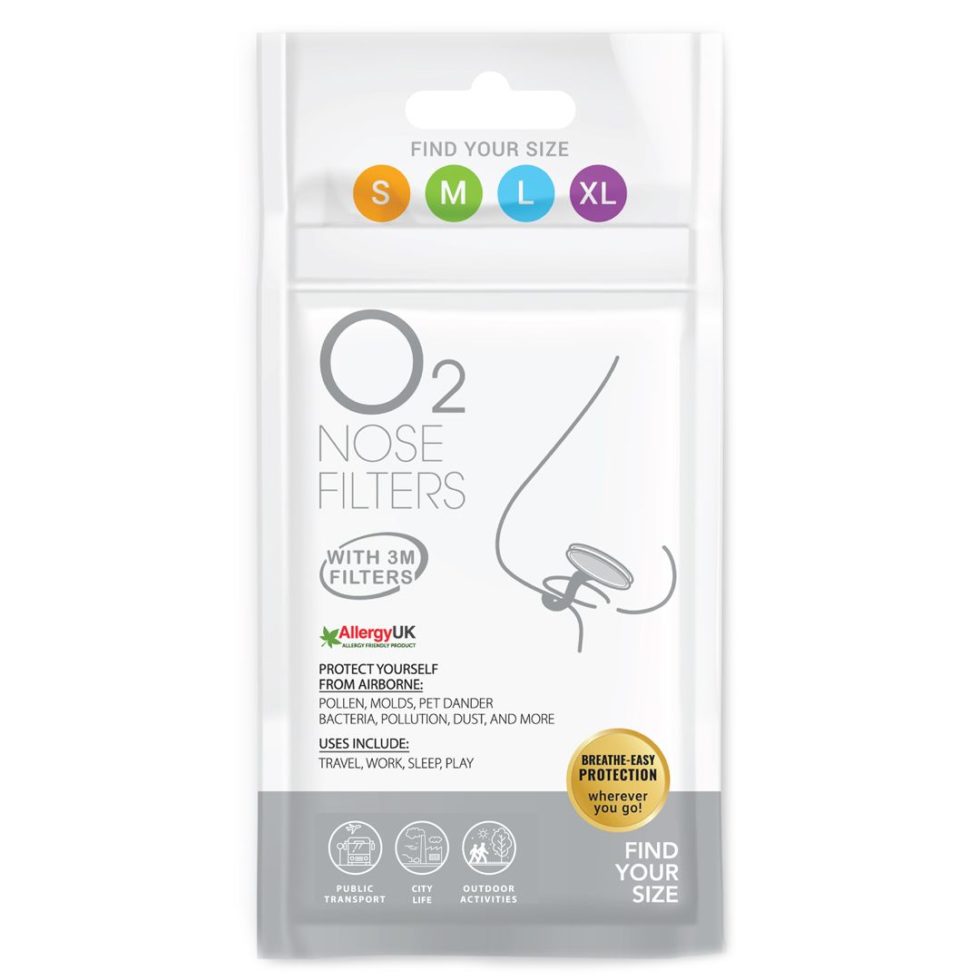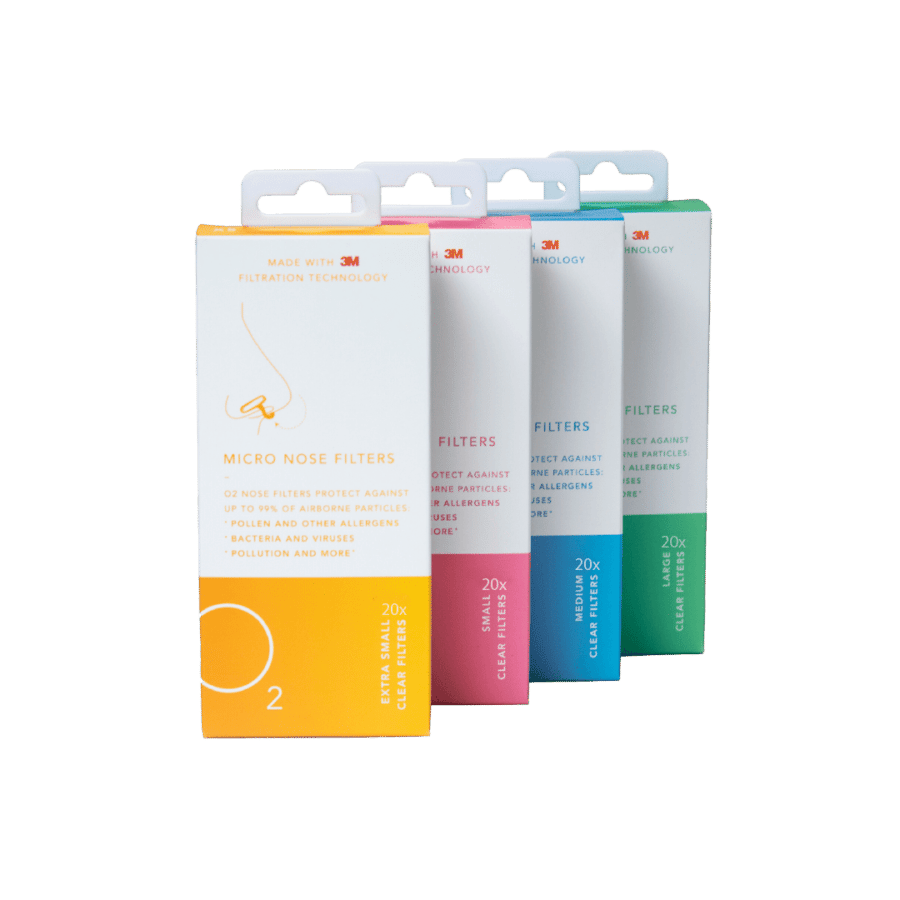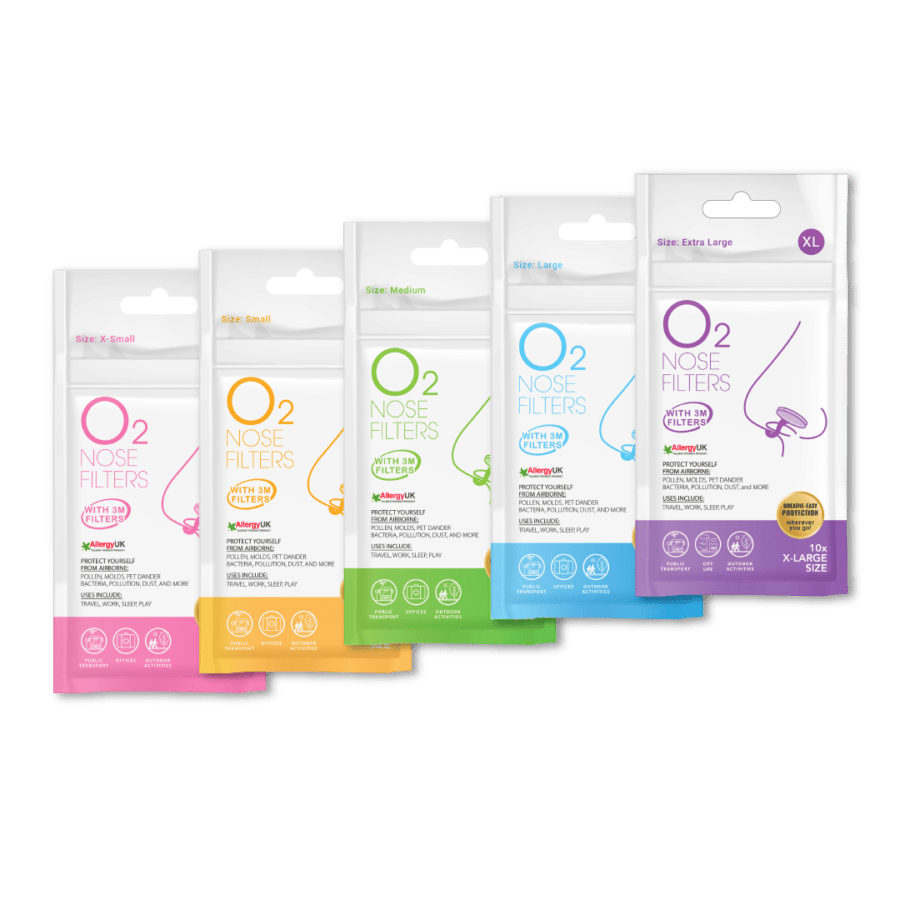Nose and sinus issues are the primary cause of more than 20-million outpatient visits every year in the United States. As it’s one of the main components of our respiratory system, the human nose is a much more complicated structure than we may initially think as it plays an important role in filtering, warming, and moistening the air we breathe. Given this, medical issues related with the nose can ultimately impact many aspects of our health and well-being. Keep reading below to learn about the most common nose and sinus problems and how you can best improve your chances at treating and preventing these uncomfortable symptoms.
Sinus Infections
A sinus infection, medically referred to as sinusitis or rhinosinusitis, occurs when fluid buildup in your nasal cavities cause germs to grow, resulting in infected, swollen, and inflamed sinuses. Generally, this fluid buildup consists of mucus blockage in the nasal passageways. While viruses remain the main cause for most sinus infections, bacteria is also known to be a contributing factor. Medical conditions that can lead to sinus blockage include the common cold, a deviated septum, seasonal allergies, asthma, and much more.
Nasal Vestibulitis
There are countless differing bacteria that live in our nasal vestibules, which is located just inside our nostrils. Our nasal vestibules are lined with skin that consist of numerous thick hairs. These hairs protect our lungs from inhaling particles, which also explains how bacteria can collect and accumulate. While most bacteria are generally harmless, the Staphylococcus bacteria is notable for causing nasal vestibulitis. Research shows that Staphylococcus bacteria is present in 20% of people and is not seen to cause infections on healthy skin. The infection usually develops as a result from a minor injury to your nasal vestibule, which can include plucking nasal hairs, nose injuries, nose piercings, picking your nose, frequently blowing your nose, and much more.
Nasal Polyps
There are many mysteries associated with why nasal polyps form, although there are several science-backed reasonings that many believe explain their causes. Chronic rhinosinusitis (CRS), which describes chronic inflammation of the sinuses lasting more than 12 weeks, looks to be the most credible reason why nasal polyps form. The mucous membranes lining the inside of our nasal cavity is always changing, this continuous process could inflame the area over time, which leads to a swelling fluid buildup that eventually becomes a group of nasal polyps. CRS is reported to affect nearly 12% of the adult population, and roughly 20% of those with CRS suffer from nasal polyps. Allergies and nasal infections advance this inflammation process, which can cause affected individuals to experience larger and more obstructive nasal polyps. Asthma, cystic fibrosis, and Churg-Strauss syndrome are all said advance the growth of nasal polyps as well.
Nosebleeds
A nosebleed that starts in the front of your nose, often referred to as an anterior nosebleed, is generally not serious and should cease after a few minutes. Anterior nosebleeds occur in the septum-side of your nostril and begin after small blood vessels, or capillaries, break open. However, nosebleeds that start from deep inside your nose, often referred to as a posterior nosebleed, may require immediate medical treatment. Posterior nosebleeds occur when larger blood vessels burst which can result in a heavy quantity of blood to flow out of your nose and down your throat. In either case, the cause of your nosebleed can have many origins, including allergies, blowing or picking your nose, being at high altitudes, an injury, and much more.
Anosmia (Loss of Smell)
When we sense a smell, a molecule released from a substance (such as a flower) will stimulate olfactory cells found deep within the nose. This information is ultimately recognized when our nasal nerve cells send the fragrant molecules to our brain. When something interferes with this natural process, anosmia or hyposmia can be the uncomfortable result. Temporary anosmia can affect people of all ages, although long-lasting loss of smell is much more common among adults over the age of 50. Affected individuals can lose their sense of smell gradually, when familiar scents smell differently as the condition develops, or anosmia can onset suddenly.
Allergic Rhinitis (Hay Fever)
As a defense system to protect your body, you naturally release histamine when you come into contact with an allergen. Histamine is a chemical that can cause what we experience as allergy symptoms. Particularly during late summer and early fall, pollen can be especially problematic to those who are sensitive to hay fever. The most common allergens to initiate this histamine process includes grass, mold, animal dander, dust mites, wood dust, and much more. In addition to pollen and seasonal allergies, further airborne particulate matter (PM) exists in a complex mixture of aerosols, chemicals, small droplets, and solid fragments. When inhaled over an extended period of time, PM has been linked to various illnesses and can even result in death. While long-term exposure of harmful particulate matter pose these dangerous health risks, short-term exposer can also lead to deadly consequences. Some of these particulates may be large enough to see, although a majority of particulates can’t be seen by the human eye.
Dry Nose
A dry nose is generally caused by a lack of mucus production in the sinuses. When explored deeper, medical experts hypothesize several possible reasons as to why one’s sinuses may stop producing mucus, such as allergies, dry climates, poor air quality, certain medications, and much more. While most people experience dry nasal passages due to one of the causes above, however, some individuals who undergo sinus surgeries may develop Atrophic Rhinitis. Being a rare condition that causes chronic nasal dryness and crusting, your sinuses may feel blocked when they’re actually not. Unfortunately, there isn’t a cure for Atrophic Rhinitis, although certain treatments such as antibiotic and moisturizing ointments can minimize symptoms.
Deviated Septum
Is your nose always blocked on one side? A deviated septum can be congenital, meaning some people are born with it as a result from a difficult birth, connective tissue disease, or a hereditary defect. A deviated septum can also be a result of normal development, such as a septum can sometimes lean towards one side as a person’s nose grows. Another primary cause of a deviated septum can be attributed to sustaining a nose injury, such as a broken nose brought on by a car accident, contact sports, a fall, or any form of physical altercations.
Postnasal Drip
Mucus is typically produced to filter out the nasal passages and provide lubrication to your throat. This essential process helps your body fight infections, filter out foreign matter, and moisten nasal membranes. Postnasal drip occurs when this process begins to produce extra mucus which causes your swallowing pattern to become a conscious rather than unconscious habit. Mucus is normally swallowed unconsciously, but the primary symptom of postnasal drip is an irritating feeling of mucus gathering in the throat after it drips from the back of your nose. This process can lead to an irritated sore throat over time that may cause coughing and voice hoarseness. Affected individuals may also notice more severe symptoms at night, especially when they’re lying down to sleep.
Sleep Apnea
Obstructive Sleep Apnea, or often abbreviated as OSA, is both the most common sleep-related breathing disorder and a serious medical issue that can lead to fatal results. Sleep apnea is observed when an afflicted individual stops and restarts their breathing many times over the course of a night, which generally minimizes the body’s ability to intake oxygen as they sleep. Many of the symptoms of sleep apnea are caused by other health issues, such as nasal congestion, heart disease, and obesity, so certain symptoms may be present in some afflicted individuals that may not be present in others. Additionally, some sleep apnea sufferers may not even know they have this disorder until their bed partner tells them of their nightly symptoms. No matter what, all of those who suffer from sleep apnea will experience abnormal nighttime breathing and the daytime effects of drowsiness.
O2 Nose Filters
As mentioned above, nasal congestion is one of the top causes of many common nose issues, which is why wearing O2 Nose Filters is such an effective way to combat these uncomfortable symptoms. O2 Nose Filters has been proven in controlled studies to help protect wearers from inhaling harmful airborne particles such as pollen, bacteria, viruses, dust, and other pollutants. Independent laboratory tests demonstrate that our Advanced Electret Media in O2 Nose Filters block 90% of particulates at PM10 and 65% of particulates at PM2.5. Additionally, O2 Nose Filters are comfortable to wear due to their latex-free design and medical-grade Thermoplastic Elastomer (TPE) materials.
Our patented AEM™ (Advanced Electret Media) filter technology relies on the principles of electrostatic attraction. The high capture ratios and extended breathability attributed to O2’s AEM™ material allows airborne particles to be captured within the filter. Rather than using a ‘screen’ approach to block the passage of particles, the charged fibers act as ‘magnets’ to retain particles while still allowing air to pass through, making O2 Nose Filters both breathable and effective.
O2 Nose Filters provides inexpensive and effective security to protect people from nose issues. While our nasal passageways try their best when it comes to filtering harmful particulate matter, they aren’t perfect. That’s why O2 Nose Filters are such an effective solution when it comes to improving our mental and physical health as well as sleep quality. Nose filters are a discreet, effective option to protect against airborne viruses and bacteria. The O2 Nose Filter uses our patented AEM™ electrostatic technology to capture allergens, viruses, and other particulates, making them a valuable tool for anyone who wants to drastically reduce their uncomfortable nasal symptoms.
-
O2 Nose Filters Sizing Pack$3.95
-
O2 Nose Filters | 20 Pack$18.95
-
O2 Nose Filters | 10 Pack$10.95 — or subscribe and save 10%






